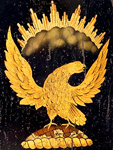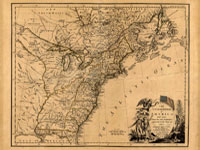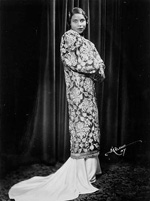The United States Coast Guard, one of the five U.S. military branches, protects the environment and U.S. citizens, economic interests, and security in the world's oceans and bodies of inland water. Specific duties include rescue operations and maritime law.
The Coast Guard's home on the web is certainly not the easiest to navigate of the Armed Forces sites. However, it does contain a noteworthy amount of content which could be put to use in the classroom, particularly background information for teachers or for student reports.
Items worth your attention include a Coast Guard blog with posts on the organization's history; a list of Coast Guard historical events, organized by day of the year; overall and regional history overviews, most in the form of PowerPoint presentations or articles; and histories of Coast Guard assets, missions, and personnel, including women and minorities.
Primary sources are also available in abundance. These include oral histories divided by theme and military engagement, back issues of official magazines, a selection of documents dating from 1791 through the late 20th century, and galleries of historic photographs. The photographs can be compared to recent images and artworks located within the Coast Guard multimedia gallery. Of the magazines, the majority offer back issues from the 2000s. However, The Reservist offers issues dating as far back as the 1950s.
If you are looking specifically for children's activities, check out "Just for Kids (and Teachers!)", which offers coloring books, information on animal mascots adopted by various Coast Guard units, teacher's guides for lighthouse and Coast Guard history, and images of lighthouses. You may also want to peruse the suggested reading list for even more in depth preparation.
Another item worth your attention is a page devoted to U.S. revenue cutters during the War of 1812. On this page, you can find paintings, ship's plans, and illustrations of the cutters and their personnel; histories of individual cutters, Captain Frederick Lee, and prisoners of war; brief overviews of the role played by the cutters; and a bibliography to assist further research.
Finally, if you want to get the kids out of the classroom and you are in the Connecticut area, you could try the U.S. Coast Guard Museum. Not in New England? Try the artifact finder to pinpoint museums in your state with Coastie artifacts.







